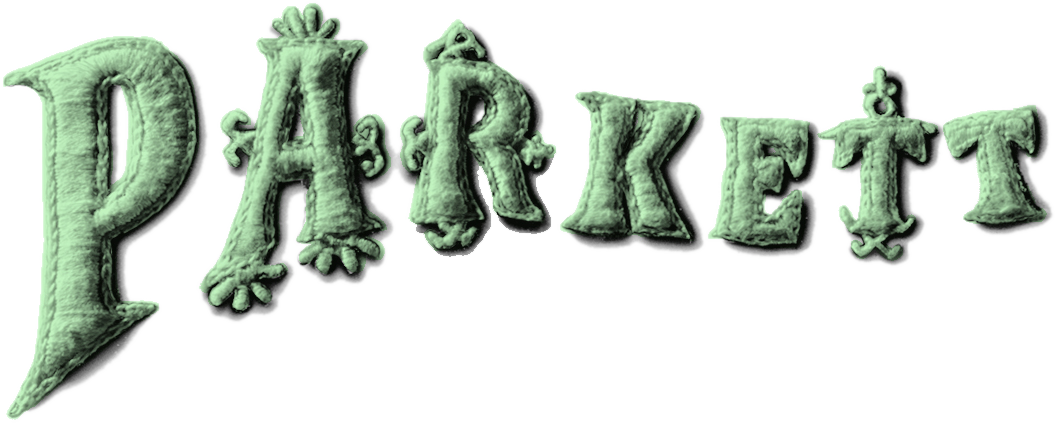Parkett Vol. 76 - 2006 | Yang Fudong, Lucy McKenzie, Julie Mehretu
Yang Fudong
Read a selected text (PDF)
View edition
Lucy McKenzie
Read a selected text (PDF)
View edition
Julie Mehretu
Read a selected text (PDF)
View edition
Insert: Steven Shearer (PDF)
Spine: Koo Jeong-A
Cumulus:
On Michael Elmgreen by Bill Arning (PDF)
On the expansion of the Kunsthaus Zug by Tadashi Kawamata (PDF)
Miscellaneous:
Julie Mehretu text in Chinese (PDF)
Olivier Mosset by Vincent Pecoil (PDF)
U.S. & Canada
Please place your order through our distributor D.A.P. here.
Browse Selected Texts and more on the Collaboration Artists
Artist Insert
Editorial
As radiant with promise as the water appears on the cover, as curious is its effect on the drifting boat.The scene is of a theatrical artificiality: the cavernlike space imparts a sense of security and creates the magic of a blue grotto, yet also implies, however faintly, the possibility of being trapped.
It seems as though the navigation of uncharted waters is the force driving not only the rowers on the cover, but also the three artists in this issue:Yang Fudong, Julie Mehretu, and Lucy McKenzie. They probe a world in flux, trawling for ideas that have yet to take shape and plumbing the depths of conflicting desires. Their inquiry into fundamental and familiar questions of cultural, intellectual and artistic identity produces startling results.
The picture of the boat stems from the work of Yang Fudong, who creates films full of suspended and condensed moments, in which joy, sorrow, and hope seem merely to confirm the conviction that the artifice of art is truer than life.
The objectives that inform the abstraction of Julie Mehretu’s images are demonstrated by the words of the writer Chris Abani: “When Julie says, ‘I am interested in the multi-faceted layers of place, space, and time that impact the formation of personal and communal identity,’ does she mean that she wants to explore the melancholic discontent of displacement? Or the displacement of melancholic discontent?”
Lucy McKenzie directs our attention to a social life peopled by her circle of friends, public figures like Brian Eno, Brian Ferry, and women artists of the past century’s avant-garde. Art and culture, a commitment to ideas, the study and weighing of present and past ideals as, for instance, Socialist Realism, inform her artistic investigations. In Tintin, she has found a figure whose contours make room for all kinds of personal concerns as well as such categories as purity, impurity, disruption, vigor, and cheery hopefulness.
Steven Shearer’s Insert also relies on a formal vocabulary that targets the context of historically defined associations. Febrile dimensions, couched in the coloring of subcultural motifs, yield a surrealist continuum that hints at the disturbing potential of eternally valid essences.
Koo Jeong-A’s design of the Parkett spine in the next three issues displays a clarity that will prove deceptive. It occurs to one that she might be making an appeal to a community, to “us,” us readers and artists, in fact, all of us on this planet: wondering if ..
Table of Content
Language Made Material, The Recent Work of Robert MacPherson by Trevor Smith
Magical Worlds: Johanna Billing’s Video Work by Philipp Kaiser
Julie Mehretu
Julie Mehretu: Found Rumblings of the Devine by Heidi Zuckerman Jacobson
Layer Me This by Chris Abani
Flies in Amber by Marlene Schuppli
Yang Fudong
Towards a New Abstraction by Marcella Beccaria
The White Cloud Drifting Across the Sky Above the Scene of an Earthquake by Yuko Hasegawa
All in a Thought, Life is Actually Quite Beautiful by Zhang Wei
Lucy McKenzie
Dreams of a Provincial Girl by Neil Mulholland
On the Road to Retreat by Isabelle Graw & Lucy McKenzie
Lucy McKenzie, Herself by Bennett Simpson
Steven Shearer, Insert
Jast Past: Rachel Harrison’s Lagerstätten by Johanna Burton
Olivier Mosset: What Painting Is Not by Vincent Pécoil
The Black Hole of Political Codes – Gregor Schneider’s Cubes, Les Infos du Pardis by Hans Rudolf Reust
Expanding the Kunsthaus Zug Without Putting on Weight, The City as Social Museum, Cumulus from Europe by Matthias Haldemann
Transformative Vision, Cumulus from America by Bill Arning





